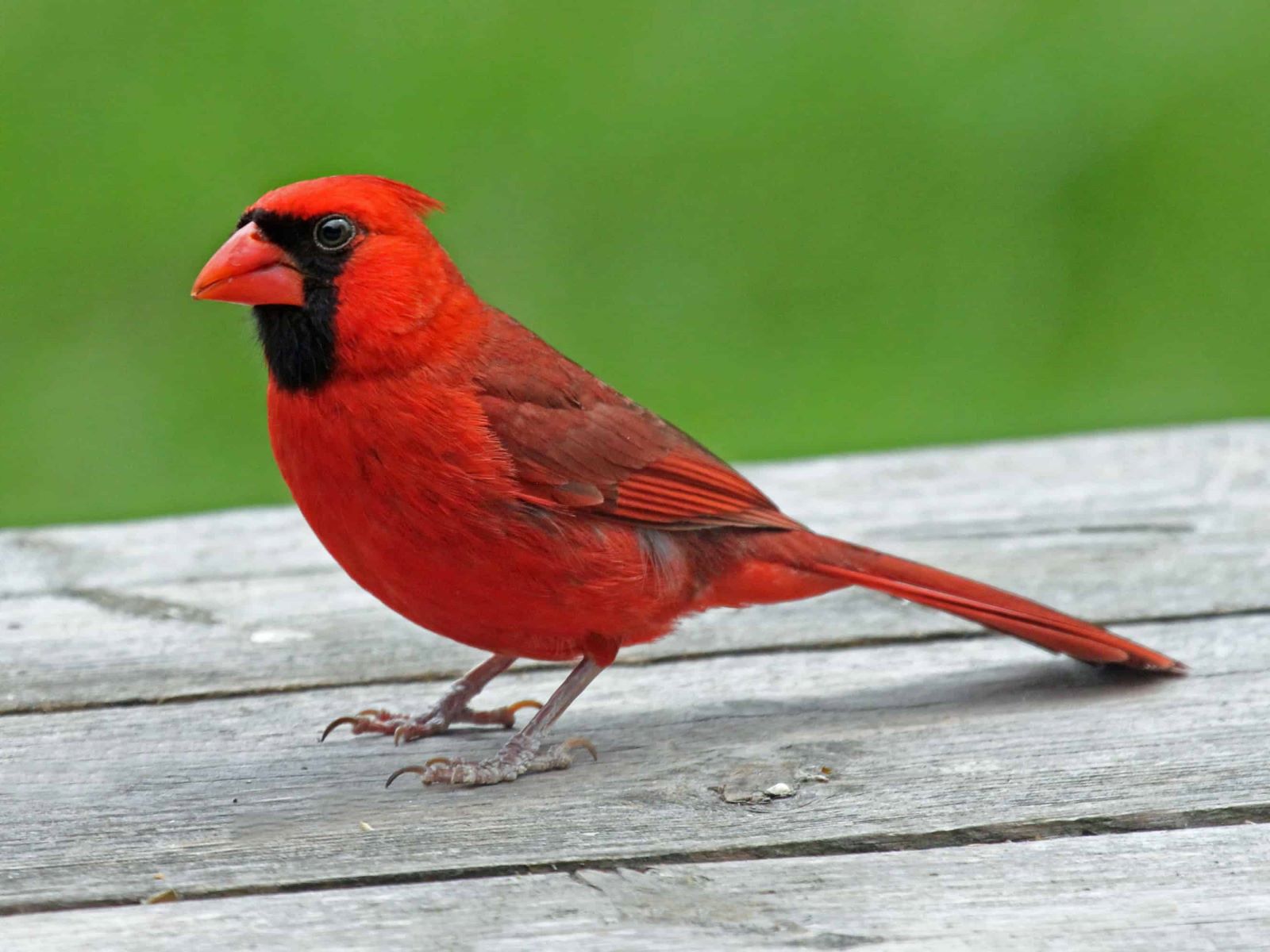
Ever wondered why the Northern Cardinal is such a beloved bird, not just in backyards but in the hearts of bird enthusiasts everywhere? This vibrant bird, with its striking red plumage and melodious song, holds a special place in the world of avian wonders. From its symbolic significance to surprising behaviors, there's more to this feathered friend than meets the eye. Ready to be amazed by some of the most fascinating facts about the Northern Cardinal? Whether you're a seasoned birdwatcher or just someone who appreciates nature's splendors, these tidbits will surely add a dash of color to your day. Let's dive into the world of the Northern Cardinal and uncover what makes this bird a true marvel of nature.
Key Takeaways:
- The Northern Cardinal's vibrant red feathers, territorial songs, and monogamous relationships make it a special bird that plays a vital role in ecosystems and holds cultural significance.
- To attract Northern Cardinals to your backyard, provide food, water, and shelter while avoiding pesticides. Conservation efforts and community involvement are crucial for their future.
What Makes the Northern Cardinal So Special?
Northern Cardinals, with their vibrant red plumage and enchanting songs, stand out as one of nature's most spectacular birds. These birds, often associated with warmth and joy, hold a special place in the hearts of bird watchers and nature enthusiasts alike. Here's why they're so special:
-
Distinctive Appearance: Male Northern Cardinals are renowned for their bright red feathers, a coloration that's not only beautiful but also rare in the animal kingdom. Females, while more subdued in color, display a charming shade of brown with warm red accents.
-
Year-Round Residents: Unlike many birds, Northern Cardinals do not migrate. They can be found throughout the year in their range, which spans the eastern United States from Maine to Texas and south through Mexico.
-
Territorial Songs: Cardinals are known for their clear, melodious songs. Males can be particularly vocal, using their songs to defend territories or attract mates.
The Diet of the Northern Cardinal
Understanding what these birds eat helps explain their adaptability and widespread presence across various habitats.
-
Varied Diet: Northern Cardinals are omnivores with a diet that includes seeds, grains, fruits, and insects. This varied diet allows them to thrive in a wide range of environments, from backyards to forests.
-
Feeding Behavior: These birds are often seen foraging on the ground or in low bushes. They use their strong beaks to crack open seeds, showcasing their adaptability in finding food.
Reproduction and Nesting Habits
The reproduction cycle and nesting habits of the Northern Cardinal offer fascinating insights into their lives.
-
Monogamous Relationships: Northern Cardinals are monogamous, often forming pairs that stay together throughout the year. This strong bond is vital for raising their young.
-
Nesting Sites: Females are responsible for building the nest, which is typically situated in dense shrubbery or low trees. The nest's concealed location helps protect the eggs and young from predators.
-
Parental Care: Both parents play a role in feeding and caring for their offspring, showcasing a cooperative approach to raising their young.
The Significance of the Northern Cardinal in Culture
Northern Cardinals hold significant cultural value across different societies.
-
State Bird: The Northern Cardinal is the state bird of seven U.S. states, more than any other bird. This designation reflects its popularity and the joy it brings to people.
-
Symbolism: Often seen during winter, their bright red color against the white snow symbolizes warmth, hope, and the beauty of life during the colder months.
-
In Folklore: Some Native American tribes believe the cardinal is a messenger between earth and spirit worlds, highlighting its spiritual significance.
Conservation Status and Threats
While Northern Cardinals are currently not at significant risk, understanding potential threats is crucial for their preservation.
-
Predation: Natural predators include cats, hawks, and snakes, which primarily target eggs and young birds.
-
Habitat Loss: Urbanization and deforestation can reduce their natural habitats, though Cardinals have shown remarkable adaptability in urban environments.
-
Climate Change: As with many species, the long-term effects of climate change on their habitat and food sources remain a concern.
Interesting Behaviors and Traits
Northern Cardinals exhibit several behaviors and traits that intrigue and delight observers.
-
Mimicry: Some males can mimic the songs of other bird species, a skill used to expand their repertoire and impress potential mates.
-
Anting: Cardinals sometimes use ants in their feathers, a behavior believed to help with parasite control. They allow ants to crawl on their bodies, or they crush them and apply them to their feathers.
-
Color Mutation: Rarely, individuals may display yellow plumage due to a genetic mutation affecting how they process pigments in their diet.
-
Aggression Towards Reflections: During breeding season, males can become aggressive towards their reflections, mistaking them for rival males encroaching on their territory.
The Northern Cardinal's Role in Ecosystems
Northern Cardinals play a vital role in their ecosystems, contributing to the balance and health of their habitats.
-
Seed Dispersal: By eating and then excreting seeds, they help in the dispersal of various plant species, aiding in habitat regeneration and growth.
-
Indicator Species: As common backyard birds, changes in their population can indicate shifts in local ecosystems, making them valuable for ecological monitoring.
-
Predator-Prey Dynamics: They serve as prey for various predators, forming an integral part of the food web and helping maintain ecological balance.
How to Attract Northern Cardinals to Your Backyard
For those interested in observing these beautiful birds up close, attracting them to your backyard is possible with a few simple steps.
-
Provide Food: Setting up bird feeders with seeds such as sunflower seeds, which are a favorite, can attract Cardinals to your yard.
-
Ensure Water Availability: Bird baths or shallow water sources are essential for drinking and bathing, making your backyard more appealing to these birds.
-
Create Shelter: Planting dense shrubs or trees provides necessary cover and potential nesting sites, encouraging Cardinals to stay.
-
Avoid Pesticides: Using natural gardening practices helps ensure a safe environment for Cardinals and other wildlife.
The Future of Northern Cardinals
Looking ahead, the future of Northern Cardinals appears bright, but continued conservation efforts are essential.
-
Adaptability: Their ability to adapt to various environments, including urban areas, bodes well for their survival amidst human expansion.
-
Conservation Awareness: Increased awareness and appreciation for these birds can lead to more concerted efforts to protect their habitats and ensure their populations remain stable.
-
Citizen Science: Engaging in birdwatching and reporting sightings can contribute valuable data for research and conservation efforts.
-
Educational Opportunities: Teaching younger generations about the beauty and importance of Northern Cardinals and other wildlife fosters a culture of conservation and respect for nature.
-
Community Involvement: Local conservation projects and habitat restoration efforts can benefit from community support, ensuring a healthy environment for Cardinals and other species.
-
Global Climate Action: Addressing broader environmental challenges, such as climate change, is crucial for the long-term health of ecosystems where Northern Cardinals and countless other species thrive.
A Final Flutter on Northern Cardinals
We've journeyed through the vibrant world of Northern Cardinals, uncovering fascinating facts about their behavior, habitat, and significance. These birds, with their brilliant red plumage and cheerful songs, aren't just a feast for the eyes and ears; they play a crucial role in our ecosystems. From their unique mating rituals to their status as a symbol of beauty and resilience across cultures, Northern Cardinals have captured our hearts and imaginations. Whether you're an avid birdwatcher or someone who appreciates nature's wonders, the story of these feathered friends reminds us of the intricate connections within our natural world. Next time you spot a cardinal, remember, you're witnessing a living testament to nature's artistry and endurance.
Frequently Asked Questions
Was this page helpful?
Our commitment to delivering trustworthy and engaging content is at the heart of what we do. Each fact on our site is contributed by real users like you, bringing a wealth of diverse insights and information. To ensure the highest standards of accuracy and reliability, our dedicated editors meticulously review each submission. This process guarantees that the facts we share are not only fascinating but also credible. Trust in our commitment to quality and authenticity as you explore and learn with us.


